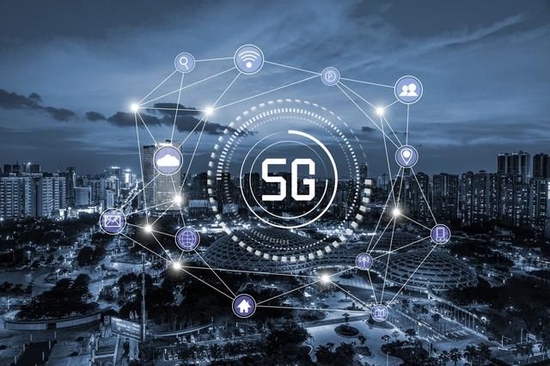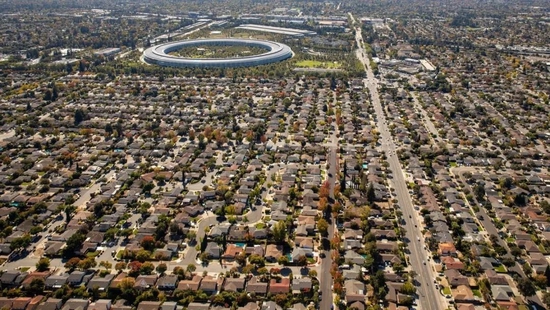your current location is:Home > Finance > depthHomedepth
India's entry into the 5G era still needs to cross the hurdles for promotion Experts: Chinese companies have opportunities
The last major Asian economy to launch 5G networks has already caught the "5G Express". Indian Prime Minister Narendra Modi announced the launch of 5G mobile services in India at the 6th India Mobile Congress on October 1. This marks that India has officially entered the 5G era and opened the 5G economy. In the first phase, the 5G network will be launched in 22 cities in India. Despite many challenges, India's 5G economic prospects are still worth looking forward to. With the development of India's 5G construction, Chinese companies that have more involvement in the terminal field are expected to play a greater role in India's 5G construction in the future.

India has high expectations for 5G
According to the "Times of India" report, on October 1, Indian Prime Minister Narendra Modi had the first 5G video call with school students. Modi said: "5G is the beginning of an infinite opportunity space, especially for young people in India." The sixth India Mobile Congress also displayed India's first ambulance supporting 5G mobile services. The car has all the critical care equipment including cameras, electrocardiogram machines, ventilators, and runs with the help of 5G networks. Doctors can use these devices for remote medical treatment.
Xiang Ligang, chairman of the China Information Consumption Alliance, told the Global Times reporter that although 5G technology has considerable promise, the 4G construction in India has not yet been perfected, and there are less than 100,000 5G base stations, mainly covering large cities and major areas. Not imminent. But for India, the deployment of 5G has greatly improved the country's informatization, intelligence and development capabilities. The government is very enthusiastic about commercial use, and has high evaluations and high expectations.
According to the "Indian Express" report, India's second largest mobile network operator, Bharti Telecom, said that it will launch 5G services in 8 cities in India from October, and currently plans to cover the country with 5G signals by March 2024. . Jio, India's largest mobile network operator, has said it will provide 5G services across the country by December 2023. Vodafone Idea, the third-largest mobile network operator, has yet to announce a 5G launch date. The operator revealed that in order to speed up the promotion, the tariff of 5G will not be higher than that of 4G. Indian Telecom Minister Ashwini Vashner said that in the next 2-3 years, most of India will have 5G services, and 5G services will not charge people extra. Earlier, Modi revealed an even more astonishing goal in his speech on the anniversary of the establishment of the Indian Telecom Regulatory Authority in May: India will launch 6G by 2030.
Start early, progress slowly
As early as September 2017, India established a high-level committee on 5G. The committee held its first meeting on December 13, 2017, at which the India 5G vision was adopted. As planned, the Indian government will auction 5G spectrum in the second quarter of 2020 to start 5G construction. But after numerous delays, the spectrum auction will not take place until August 1, 2022. The high price of 5G spectrum is also an important reason for delaying the deployment of 5G in India. The Telecom Regulatory Authority of India had hoped to raise $84 billion (about 603 billion yuan) in the spectrum auction, and Indian mobile operators have been demanding lower reserve prices and delaying auctions, citing financial and competitive pressures. In the end, the Indian government raised 1.5 trillion Indian rupees (about 130.7 billion yuan) in the auction, of which Jio, the largest operator, became the largest buyer, accounting for about 60% of the total auction amount.
5G test speeds in India are high, but actual commercial speeds remain to be seen. Yan Xiaoxiao, chairman of Sanfu Engineering, who provides supporting services for mobile phones in India, currently lives in Noida, Uttar Pradesh, a satellite city of New Delhi. He told the "Global Times" reporter that some cities, including New Delhi, have opened 5G services, which are currently free trials. Although it is only tens of kilometers away from New Delhi, 5G services are not yet available in Noida. In addition, his mobile phone is an iPhone 14 Pro Max, and its esim card does not support the use of 5G. No one in India around him cares about 5G being turned on.
The reporter saw the introduction on the official website of Bharti Airtel that Bharti Airtel's 5G network speed is 30 times faster than that of 4G at its highest. An analysis by Ookla, an American internet speed test statistics company, shows that India’s 5G download speed has hit 500Mbps on the test network. But when the network is widely available, 5G speeds in India could drop dramatically.
The reporter felt in India that India's 4G signal is good in major cities, but poor performance in rural areas, and 4G signals are not well received along major highways. On one of India's highest-rated highways, from New Delhi to the Taj Mahal, once driving a short distance out of New Delhi, there was no signal along the way until it was approaching Agra. The situation of 5G networks that require large-scale base stations can be imagined.
Facing multiple problems, Chinese enterprises still have opportunities
Xiang Ligang believes that India's 5G construction is limited by the following main factors. The first is the issue of construction costs. The biggest difficulty in promoting 5G in India is that in order to achieve nationwide coverage, the construction cost will not be too low. Second, Samsung's overseas equipment and technology experience is insufficient and needs to be tested. India initially hoped to use equipment from Huawei and ZTE. Affected by geopolitical and US factors, India's 5G currently mainly uses Samsung equipment, but Samsung has relatively weak technology among major global 5G equipment manufacturers. The third difficulty is India's lack of 5G application capabilities. 5G is mainly used in two aspects. One is to improve network capabilities. Based on the current 4G application, India has opportunities. Another level is industrial manufacturing, social management and social operations, such as smart ports, robots, drones, and smart factories. There is still a big gap in India in this regard, and it will take a long time to improve. Compared with Europe, America and China, India needs to "make up lessons". Fourth, it is difficult for India to build 5G base stations, mainly due to the troublesome approval procedures for private land occupied by base stations.
Insufficient supply of 5G mobile phones also restricts the popularity of 5G in India. To drive 5G adoption faster, Jio is partnering with Google to develop a cheap 5G smartphone. According to the latest data released by Indian market research agency CMR, one-third of smartphones shipped in India in the second quarter of 2022 are 5G phones. Samsung holds the top spot in the 5G smartphone market with a 28% market share, followed closely by vivo with a 15% market share. Apple said it will start upgrading its iPhone models in India in December to make them compatible with 5G networks, as the Indian government is urging phone makers to adopt high-speed networks.
But the real wave of replacement in the Indian market has yet to come. "India Today" reported that the vast majority of mobile phones in India currently do not support 5G. A local survey company in India surveyed 9,965 respondents and found that only 4% have plans to buy a new 5G mobile phone, 12% expect to buy in the first half of 2023, and 8% expect to buy in the second half of 2023. 10% expect to buy in 2024.
But no matter what, 5G in India has already started. Yan Xiaoxiao believes that although India has not responded much yet, 5G will soon be able to drive a large market. India will have 369 million 5G subscribers by 2026, according to the research house, more than half of the current global 5G subscribers. In addition, the Indian government also stated that by 2035, the contribution of 5G to the Indian economy is expected to reach 450 billion US dollars.
Despite the headwinds brought by multiple factors, Chinese companies will still have the opportunity to intervene in India's 5G construction in the future. India's "Down to Earth" website recently reported that India's policy obstacles hinder India's 5G construction, and China's breakthrough development is helping it become one of the world's 5G standard-setters.
Xiang Ligang said that China is expected to play more roles in India's 5G construction in the future. "The first is the network. If the Indian government allows Chinese companies to enter, Huawei and ZTE will have strong competitiveness. Second, in terms of terminals, there are a large number of Chinese companies in India, including Xiaomi, vivo, OPPO, etc. Because China's 5G mobile phones are cheap, Apple and Samsung are relatively expensive, and Chinese 5G mobile phones are quite competitive in India. There are also opportunities to promote smart ports, smart mines, and unmanned driving to India. The number of countries in the world that have reached China's level and mature experience in these areas is very high. few."
related articles
Article Comments (0)
- This article has not received comments yet, hurry up and grab the first frame~













